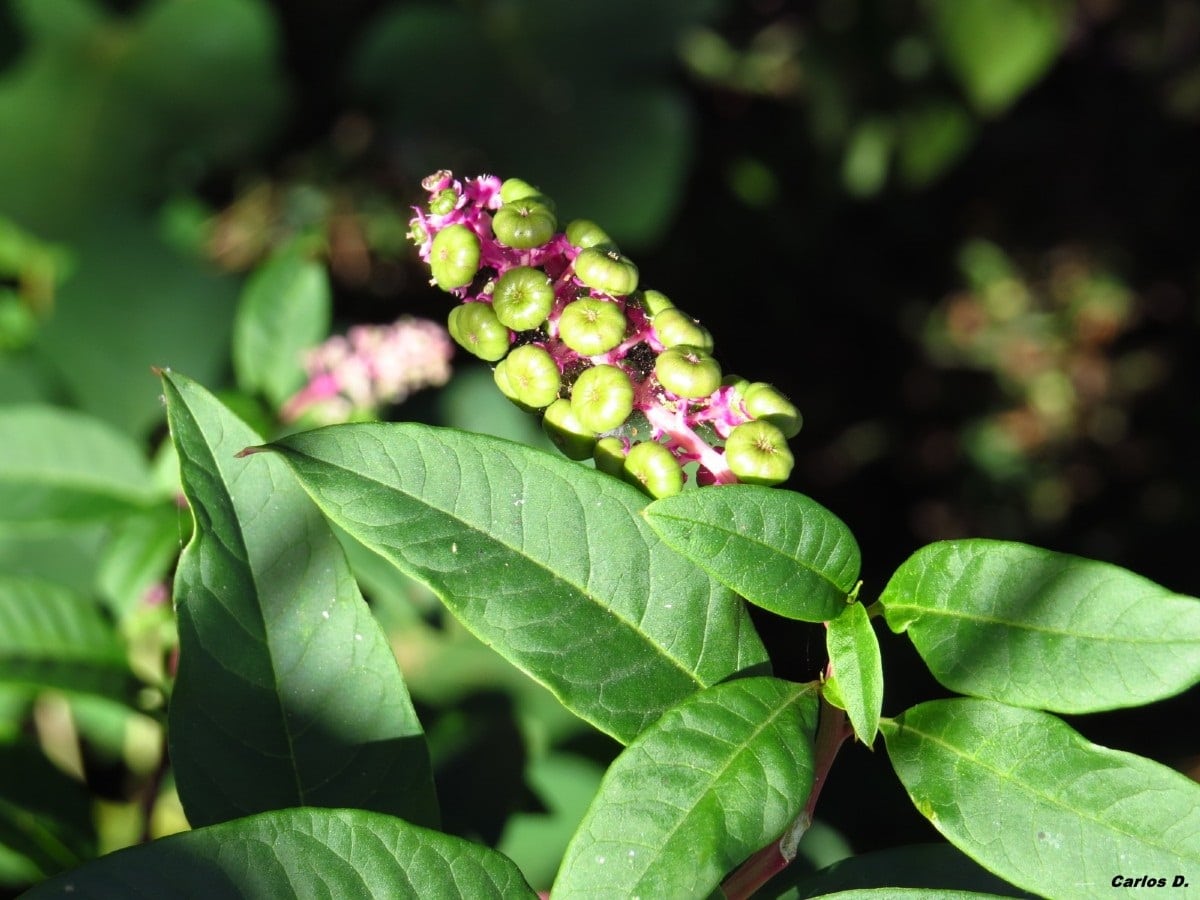
The Phytolacca americanaalso called phytolac, It is found among the shrubs that are part of the Phytolacca familyIt is native to North America where it tends to develop commonly within areas with abandoned land, in humid areas and on the edges of roads. As the years have passed, it has managed to spread almost globally, reaching Spain during the XNUMXth century.
It is a species capable of reaching up to 3m in height, which has perennial roots (that is, they are capable of living between 1-2 years), fleshy and quite large, which in turn tend to develop numerous rootlets. Its stem stands out for being branched and hollow; While their leaves tend to have a lanceolate oval shape, be alternated and are approximately 10 cm wide, they are characterized by developing whole and it is even possible to perceive their veins.
Features

Its flowers are usually numerous and have a pink or white color, borne in clusters of racemes, having a shape opposite to that of its leaves. They are free of petals and have 5 sepals of a light green shade; For its part, its fruits consist of berries very similar to blackberries, having a red color which when it reaches maturity turns black, and inside it has several seeds.
Cultivation of Phytolacca americana
It consists of a plant that normally does not require frequent risks, which is due to the fact that it is distinguished by being a rustic species that has a high level of resistance; so it is only necessary to water it in certain cases, while it is young or when there are very high temperatures.
Usually the Phytolacca americana It is able to stay without problems in environments where there is a lot of heat or cold, however, does not have the ability to withstand frostespecially if they are produced constantly, although after a while it will be able to germinate again from its root.
Although it does not need pruning, the truth is that it is possible to carry out both maintenance and cleaning pruning, during which those branches that are damaged are removed; It is worth mentioning that these prunings should be carried out in early spring in order to promote proper and healthy growth.
It’s spreads through the seeds and it has the ability to germinate without problem even after being in the soil for a long period of time, because it has great germination power that allows it to remain for many years. Likewise, it should be noted that it requires a good drainage system in order to prevent its roots from rotting.
Diseases and pests
Aphid It is among the pests that usually affect the plantations of Phytolacca americanaalthough it is quite simple to distinguish it because it is usually located at the back of the leaves and it occurs in large groups, so in several cases it is possible that they damage a large part of them.
The mealybug It also commonly affects this plant, but it is a pest that it is possible to treat through easily available pesticides inside stores specialized in gardening supplies.
Warnings

It is necessary to emphasize that each of the parts of phytolac is usually considered toxic, including its seeds and berries, which can become extremely harmful and dangerous, especially when they reach maturity.
Thus, we can say that oral consumption of any part of this plant could generate nausea, stomach cramps, vomiting, abdominal paindiarrhea, weakness, drowsiness, hypertension, spasms, tachycardia, respiratory failure, seizures and even, in the most severe cases, the death of whoever ingests it.
However, it also has certain medicinal uses, such as, for example, it used to be used as a purgative, heart stimulant, emetic, and even to treat itching, syphilis, and also cancer; as well as as an anti-inflammatory and analgesic. So it is a plant with many medicinal properties.

